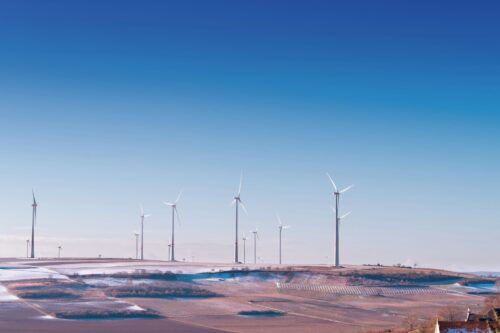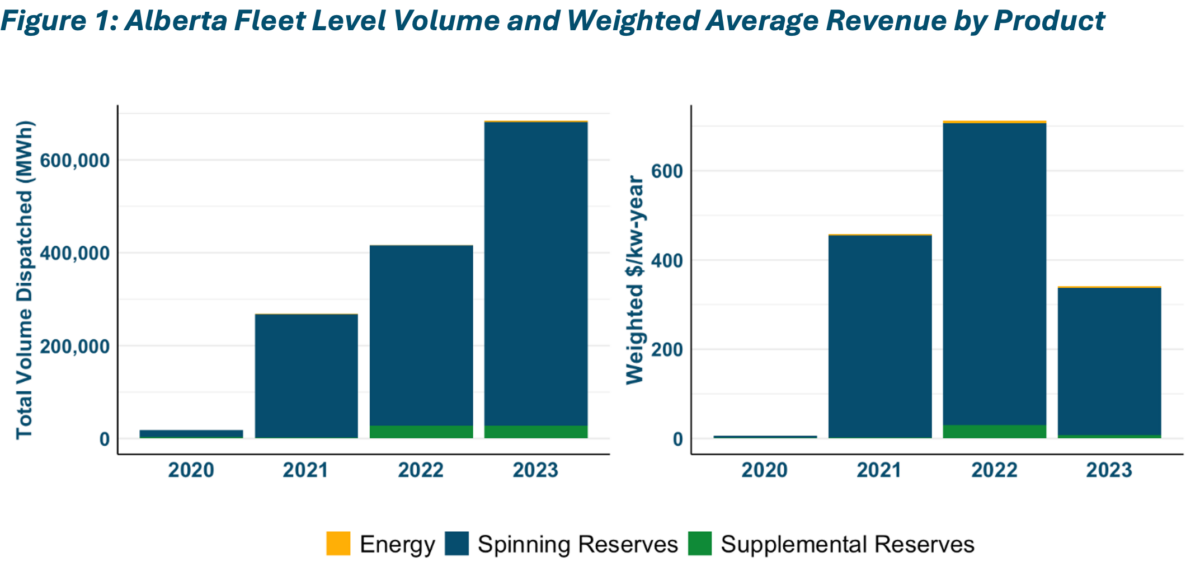
A core part of E3’s price forecasting process is understanding the economics of all technologies for each market it covers with an off-the-shelf price forecast. For the release of the AESO forecast, E3 conducted a deep dive on the nascent energy storage market in Alberta. The following is an executive summary of our deep dive into the energy storage market in Alberta.
Please contact marketprices@ethree.com or visit the E3 store for more information on our AESO outlook, and for energy storage revenue forecasts for the AESO market including ancillary services.
Background: Energy Storage in Alberta
The first energy storage in Alberta came online in late 2020 with 10MW of capacity, followed quickly by nine additional 20MW projects online for a total of 190MW of capacity today. Looking forward, there are three standalone storage projects and four solar hybrid projects under construction that will add approximately 170MW by 2026, increasing that total to 360MW.
Energy Storage Revenue Streams
Currently, the Alberta market has several potential revenue streams for market participants including, but not limited to Energy arbitrage, Ancillary Services and Black Start. It’s noteworthy that Alberta’s energy only market has no explicit capacity prices, though participants are permitted to offer into the market at prices higher than short run marginal cost to recover fixed costs. E3 evaluated historic storage operations and performance in the Energy and Ancillary Services markets.
Historic Operations and Performance
A review of historic performance demonstrates that current energy storage operators are primarily providing spinning reserve, as shown in the chart on the left in Figure 1 below. On the right, Figure 1 illustrates the weighted average annual revenue per kW of storage capacity earned in the Alberta market across the storage fleet. Spinning reserves have been the main source of revenue in the market. E3 estimates that the initial storage projects have a levelized fixed cost (LFC) of $190/kW-year, and ~$50/kW-year in tariff costs. Therefore, given the revenues from Figure 1 (on the right hand side), the first three years of operations have provided a positive IRR for the Alberta fleet, buoyed by historically high annual average energy prices of $101.93/MWh, $162.46/MWh, and $133.36/MWh from 2021-2023 respectively. Ancillary services prices were also strong during this period seeing $60.20/MWh, $92.75/MWh, and $64.81/MWh from 2021-2023 respectively.

E3 also used its proprietary energy storage optimization model, RESTORE, to run a back cast for 2021-2023 to assess what optimal operations would have been over the same time horizon. For further details on the RESTORE analysis, the potential impact of regulating reserves, and our forward-looking view on Alberta battery storage economics please refer to our full paper “Alberta Energy Storage Economics.”


